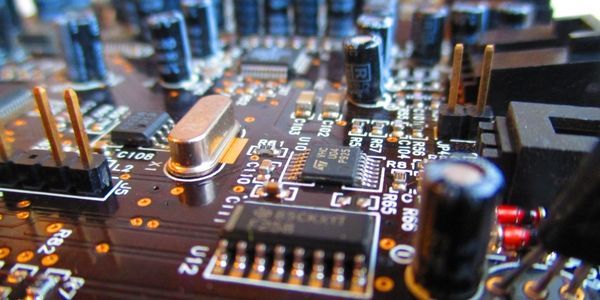Download PDF
Capacitively Coupled Plasma Analysis
Technology Category
- Analytics & Modeling - Digital Twin / Simulation
- Analytics & Modeling - Predictive Analytics
Applicable Industries
- Electronics
- Semiconductors
Applicable Functions
- Product Research & Development
Use Cases
- Digital Twin
- Process Control & Optimization
Services
- Software Design & Engineering Services
- System Integration
The Challenge
The multiphysics nature of plasmas presents enormous challenges for numerical simulations; analysis of the CCP process presents added difficulty due to the existence of a plasma sheath, the dynamic behavior of the plasma, and the large number of RF cycles required to reach a periodic steady state. Power deposition into the plasma is highly non-linear and the strong gradient of the electric field in the plasma sheath may lead to numerical instabilities unless a sufficiently fine mesh is applied. Typical CCP reactors may also contain sharp geometric corners that can cause a substantial local electric field that provide unphysical ion fluxes.
About The Customer
AltaSim Technologies, based in Columbus, Ohio, specializes in advanced simulation technologies. The company focuses on providing high-fidelity simulations for complex physical phenomena, including plasma processes. AltaSim Technologies employs a team of experts in various fields of engineering and physics to deliver cutting-edge solutions for their clients. Their expertise in multiphysics simulations allows them to tackle challenging problems in industries such as semiconductors and electronics. By leveraging tools like COMSOL Multiphysics, AltaSim Technologies aims to enhance the development and optimization of advanced manufacturing processes.
The Solution
AltaSim Technologies has performed one- and two-dimensional simulations of low-frequency RF discharges in axisymmetric CCP reactors for Maxwellian and non-Maxwellian cases using COMSOL Multiphysics. Electron transport properties and Townsend coefficients were calculated using the two-term Boltzmann approximation as a preprocessing step to the numerical analysis of the plasma. Ion densities are shown in Figure 1 for a 1D simulation of a non-Maxwellian plasma. Extensions of the model to analyze the plasma behavior for a Maxwellian plasma in a 2D case are shown in Figures 2 and 3. The simulations incorporate the multiphysics nature of plasmas and consequently can be used to assist with the development of new CCP processing technology.
Operational Impact
Related Case Studies.

Case Study
Remote Temperature Monitoring of Perishable Goods Saves Money
RMONI was facing temperature monitoring challenges in a cold chain business. A cold chain must be established and maintained to ensure goods have been properly refrigerated during every step of the process, making temperature monitoring a critical business function. Manual registration practice can be very costly, labor intensive and prone to mistakes.
Case Study
KINESYS Semiconductor Factory Automation Software
KINESYS Software provides both Integrated Device Manufacturer (IDM) and Original Equipment Manufacturer (OEM) customers world-class software products and solutions for advanced wafer and device traceability and process management. KINESYS offers state of the art database technology with a core focus on SEMI standards. KINESYS’ challenge was to make back-end processing failure-free and easy to use for clients while supporting licensing models more adaptable to changing industry needs.

Case Study
Cloud Solution for Energy Management Platform-Schneider Electric
Schneider Electric required a cloud solution for its energy management platform to manage high computational operations, which were essential for catering to client requirements. As the business involves storage and analysis of huge amounts of data, the company also needed a convenient and scalable storage solution to facilitate operations efficiently.

Case Study
Leveraging the IoT to Gain a Competitive Edge in International Competition
Many large manufacturers in and outside Japan are competing for larger market share in the same space, expecting a growing demand for projectors in the areas of entertainment, which requires glamor and strong visual performance as well as digital signage that can attract people’s attention. “It is becoming more and more difficult to differentiate ourselves with stand-alone hardware products,” says Kazuyuki Kitagawa, Director of Service & Support at Panasonic AVC Networks. “In order for Panasonic to grow market share and overall business, it is essential for us to develop solutions that deliver significant added value.” Panasonic believes projection failure and quality deterioration should never happen. This is what and has driven them to make their projectors IoT-enabled. More specifically, Panasonic has developed a system that collects data from projectors, visualizes detailed operational statuses, and predicts issues and address them before failure occurs. Their projectors are embedded with a variety of sensors that measure power supply, voltage, video input/ output signals, intake/exhaust air temperatures, cooling fan operations, and light bulb operating time. These sensors have been used to make the projector more intelligent, automatically suspending operation when the temperature rises excessively, and automatically switching light bulbs. Although this was a great first step, Panasonic projectors were still not equipped with any capability to send the data over a network.







